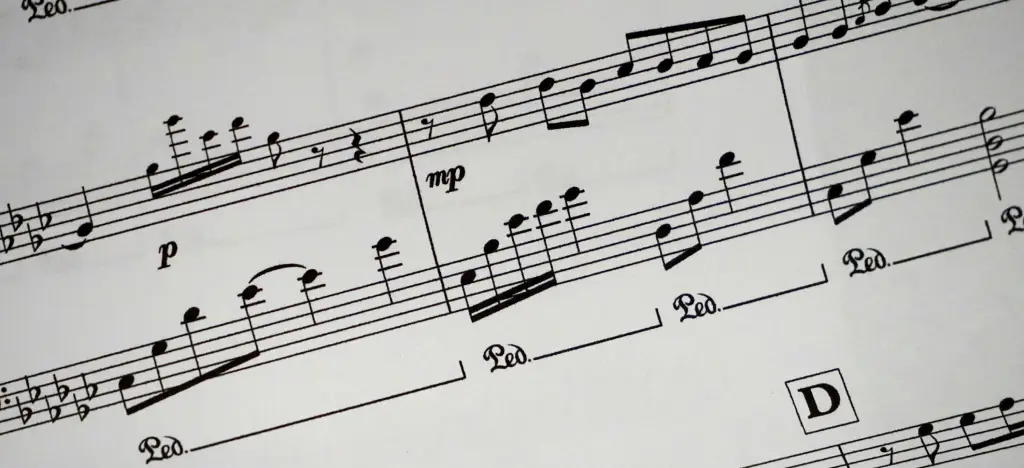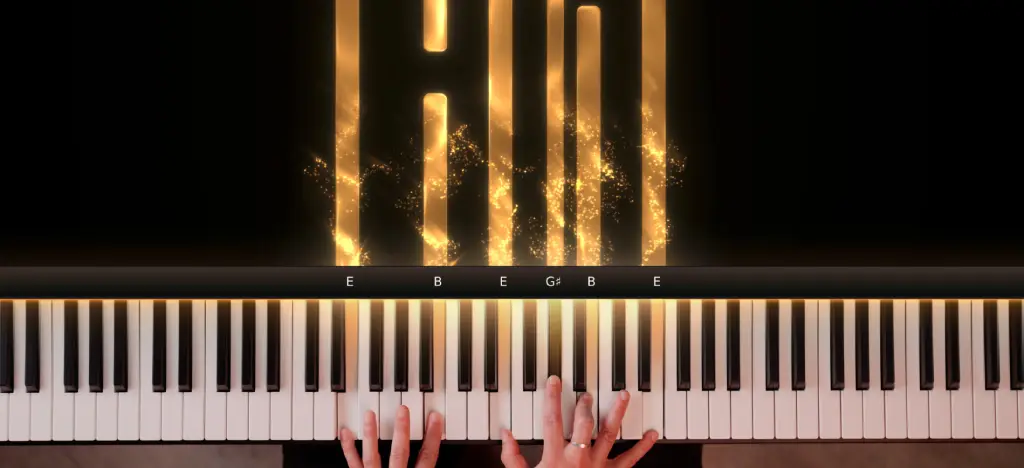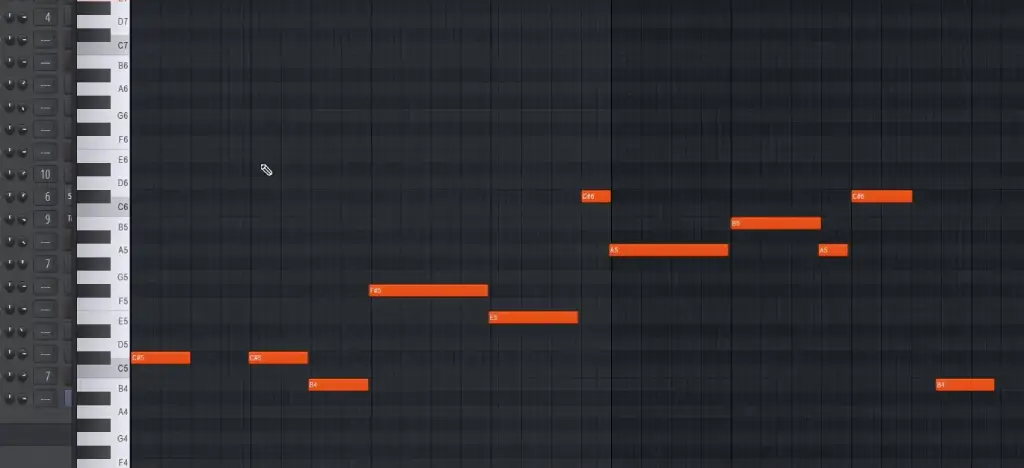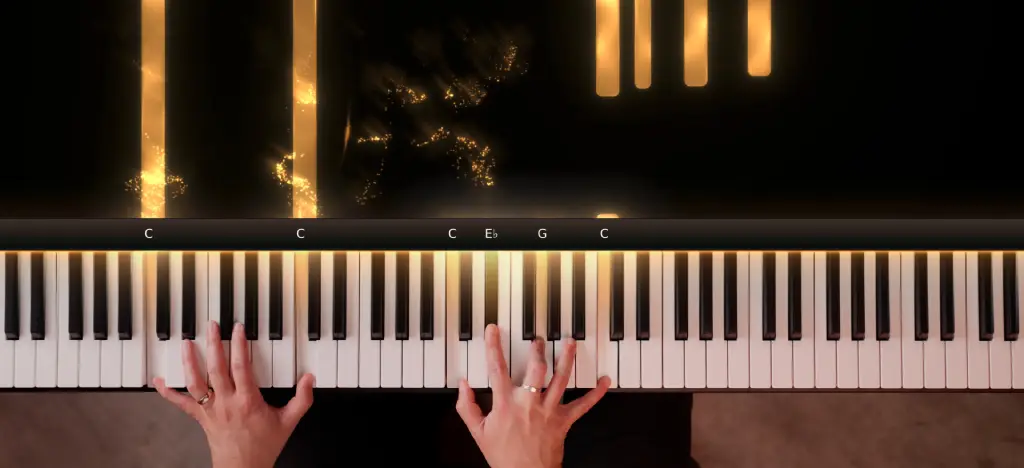If sheet music has ever made you feel stuck, you’re not alone. Treble clef, bass clef, sharps and flats — it can be overwhelming, especially when all you want to do is play.
The truth is, you don’t need to read music to start learning piano. In fact, many great pianists never did (Paul McCartney, Elton John). There are simpler, more intuitive ways to learn — and they work.
Let’s explore the alternatives.
- My experience of reading piano sheet music
- What is sheet music, and why do people use it?
- Are there other ways to read music?
- 1. Piano chord symbols
- 2. Grid-style visual notation
- 3. Falling-block notation
- 4. Piano roll notation (in DAWs)
- So how can beginners actually learn without sheet music?
- Should you learn sheet music eventually?
My experience of reading piano sheet music
I started learning music at a young age, playing the cello. I was perfectly comfortable reading a single line of music, but when I switched to piano, I hit a wall. Suddenly I was expected to read two lines at once: one for the left hand, one for the right. It felt like trying to read two different books at the same time.
I kept at it for years, thinking it would eventually click. But it never did. I could read music, sure — slowly, awkwardly, never fluently. And it made playing piano feel like hard work rather than fun. When I finally let go of the idea that I had to read sheet music, something shifted. I started focusing on chords, patterns, and muscle memory. Piano finally became something I enjoyed.
What is sheet music, and why do people use it?
 Sheet music is a way of writing music down. It tells you which notes to play, when to play them, and how long to hold them. It’s incredibly precise — and essential if you’re playing classical music or accompanying a singer from a score.
Sheet music is a way of writing music down. It tells you which notes to play, when to play them, and how long to hold them. It’s incredibly precise — and essential if you’re playing classical music or accompanying a singer from a score.
But for beginners, sheet music can feel like a mountain to climb. It’s not just the note names — it’s the rhythm, the key signatures, the dynamic markings, and the need to read two staves at once (one for each hand). It can be mentally exhausting. And for many learners, it ends up being a barrier rather than a bridge.
Are there other ways to read music?
Yes — and many of them are far more beginner-friendly.
Here are a few alternatives to traditional sheet music that still let you write, understand, or follow music. One of the easiest ways to play music without reading traditional notation is by using chord symbols.
1. Piano chord symbols
This is by far the most common alternative. Instead of reading every individual note, you just read the names of the chords — C, Am, F, G7, and so on — and play them in whatever rhythm fits the song. You might see the chord names written above or below the lyrics, or simply jotted down on a page.
Let’s take the classic song Let It Be by The Beatles. You don’t need full sheet music to play it. With just the chord names, you can play along and sing:
📝 Example:
🎶 Let it be, let it be, let it be, let it be
C G Am FIt’s fast to learn, easy to remember, and makes it simple to play thousands of songs.
2. Grid-style visual notation
This system has become really popular thanks to teachers like David Bennett, who create beginner-friendly arrangements that show exactly what to play, without using standard notation. The notes are written using letter names, stacked vertically to show when they’re played together. Chords are written underneath, and the layout reflects the timing and rhythm visually.
It’s clear, intuitive, and ideal for adult learners — especially those coming from a guitar or songwriting background. You can see both hands at a glance, and there’s no need to interpret clefs or accidentals.
 💡 ARTMASTER TIP: For a step-by-step guide to playing Let It Be using this method, including a free video tutorial, check out our guide — Beginner-friendly songs to learn on piano
💡 ARTMASTER TIP: For a step-by-step guide to playing Let It Be using this method, including a free video tutorial, check out our guide — Beginner-friendly songs to learn on piano
3. Falling-block notation
You’ve probably seen this system in apps like Synthesia, Flowkey, and Simply Piano — and it’s the exact approach we use at ArtMaster.
Notes fall down the screen in colourful blocks, landing on a visual keyboard. You press the key when the block lands. Longer blocks mean you hold the note longer. It’s clear, immediate, and you don’t need to read anything — you just react.
It’s especially effective for beginners and visual learners. Plus, it helps develop timing and coordination naturally.

4. Piano roll notation (in DAWs)
If you’ve ever tried making music in GarageBand, Logic, or Ableton, you’ve seen this one. Notes are shown as horizontal bars on a grid — higher notes are placed higher on the screen, longer notes are stretched further sideways.
This system is great for editing music digitally, writing your own parts, or understanding how a piece is built. It’s not often used to teach beginners, but it’s a powerful way to work once you start creating your own music.
 💡 ARTMASTER TIP: Working in a DAW and want your piano to sound more realistic? Check out our Piano for Producers course — it’s designed to help you create expressive, professional-sounding parts
💡 ARTMASTER TIP: Working in a DAW and want your piano to sound more realistic? Check out our Piano for Producers course — it’s designed to help you create expressive, professional-sounding parts
So how can beginners actually learn without sheet music?
Here are the three best and most accessible ways to get started:
1. Learn chords and play songs
First, you can learn chords and use them to play songs. Most popular songs use just a few chords — once you know four or five, you can play hundreds of tunes. This method builds a strong foundation and gives you immediate results.
💡 ARTMASTER TIP: A great starting point is our complete guide to playing piano chords and our 100+ songs you can play with just 4 chords.
2. Use video tutorials
Whether it’s on YouTube or in a structured course like ours at ArtMaster, watching someone demonstrate what to do takes the mystery out of playing. You can see where to put your hands, hear what it’s supposed to sound like, and rewind or pause whenever you need to.
💡 ARTMASTER TIP: Our piano courses use visual, beginner-friendly methods — so you can play full songs without needing to read sheet music. You can try them all as part of your free 7-day trial.
3. Try interactive apps
These give you real-time feedback, turning your practice into a kind of game. You’ll know instantly if you played the right note, and many of them adjust the difficulty as you improve. These are great for building confidence and keeping your practice consistent.
💡 ARTMASTER TIP: Artie will be the first a real-time, interactive AI music tutor that listens, speaks, and adapts just like a human teacher. Join the waitlist now.
Should you learn sheet music eventually?
Maybe. It depends on what you want to do with your piano playing.
If your goal is to play classical pieces, study music formally, or sight-read complex arrangements, then yes — learning to read sheet music is absolutely worth it.
But if your goal is to play songs you love, write your own music, jam with others, or just unwind at the keyboard… you can do all of that without ever reading traditional notation.
In the end, the best way to learn piano is the one that keeps you coming back to the keys. If that means skipping sheet music for now — go for it. Music should feel good from the start.

